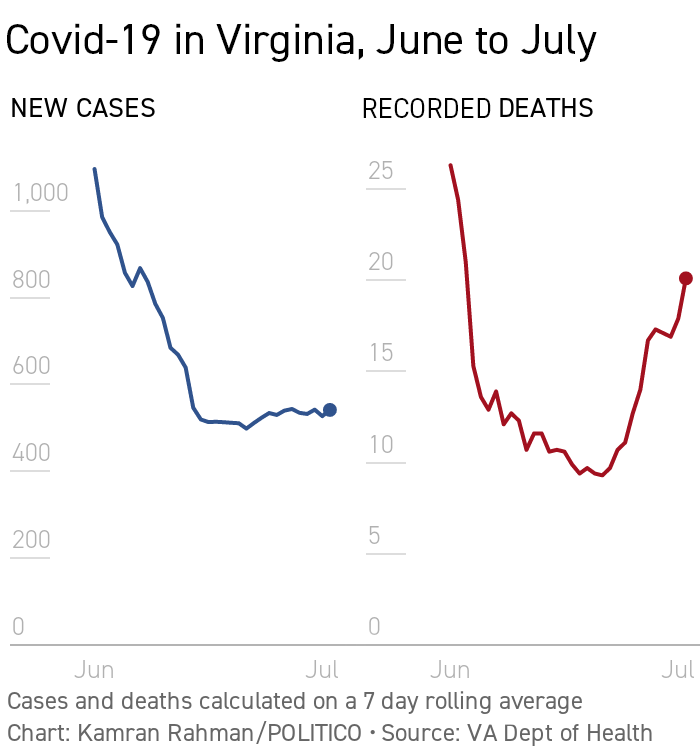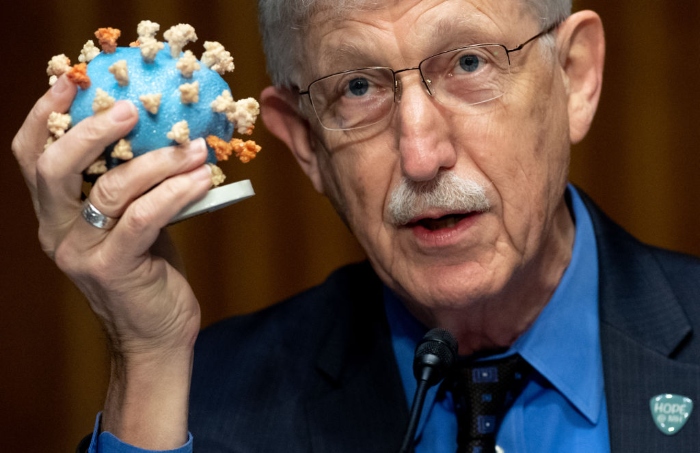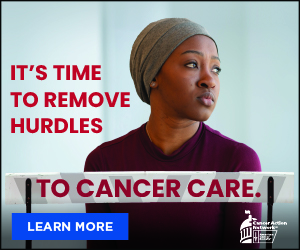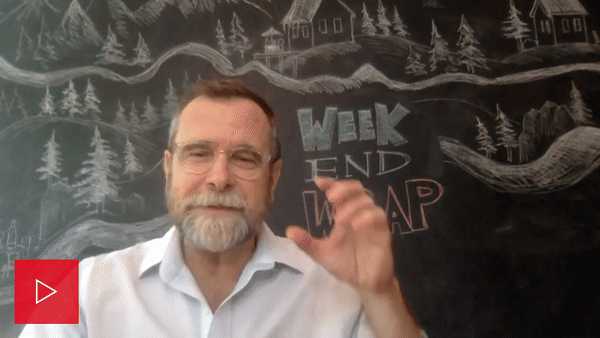
BY MAYA KING AND RENUKA RAYASAM
|
With help from Myah Ward
STATUES OF LIMITATION — President Donald Trump’s Mount Rushmore Independence Day celebration has alarmed some state officials and public health experts who are worried about the risks associated with conducting a pyrotechnics show in an area prone to forest fires during a pandemic.
But Mount Rushmore — the faces of four U.S. presidents carved into the side of a mountain on lands historically belonging to Native Americans — has also been pulled into the debate about who gets enshrined in national monuments.
A nationwide reckoning on race has inspired protesters across the country to remove the statues thought to be most emblematic of America's legacy of racism and bigotry. Since the protests began in response to George Floyd’s death at the hands of police on May 25, more than 60 statues of Confederate figures have been removed or are set to be taken down from public squares across the country.
This debate recently made it to my family’s kitchen table. My mom brought up a field trip I took with my fifth-grade class from Tallahassee to Atlanta that was punctuated by a hike to the top of Stone Mountain. This was a happy excursion that now feels more like a painful memory. The figures engraved into the beloved mound depict the Confederate leaders Robert E. Lee, Stonewall Jackson and Jefferson Davis — all men who were, among other things, pro-slavery and racist.
“Why did I let you go on that trip?” my mom asked me more than 12 years after the fact. Many Americans are grappling with a similar question: Knowing what we know now, should there be Confederate monuments at all? And what about monuments to other slaveholders?
Confederates seem to be on the way out. Mississippi’s governor on Wednesday signed a bill to remove the rebel emblem from its state flag. Music groups are changing their names, rebuking any allusions to the Old South. The Dixie Chicks are now The Chicks. Lady Antebellum is Lady A. Protests calling for the expungement of the Stone Mountain carving — which is bigger than Mount Rushmore — are growing in Georgia. On Capitol Hill, Congress is debating whether Confederate names should be removed from military bases.
But not everyone is in favor of them coming down or even being lost to history, including Trump, who threatened to veto a critical defense spending bill over renaming bases.
The stickier questions concern former leaders who weren’t Confederates but owned slaves. What about the famed politicians who held offensive views that wouldn’t fly today? If only half the men on Mount Rushmore owned slaves, are they the only ones we should consider removing? That would leave us with Abraham Lincoln and Theodore Roosevelt, whose likenesses are still up for debate in other places: A statue of Roosevelt is scheduled to be removed from New York’s Museum of Natural History for the way it depicts his dominance over Black and Native American figures. In D.C., one of the most contested statues is Lincoln’s Emancipation Memorial, which depicts him as a similarly domineering figure over African Americans.
And if the statues should go, who should remove them and who will pay for it? While a number of protesters have taken the task of removing statues into their own hands, lawmakers across the country have responded to protesters’ actions with government-sanctioned removal of statues.
Few are suggesting we remove Thomas Jefferson from his memorial on the National Mall, or rename the Washington Monument, or obliterate the faces of the two founders from Rushmore’s mountainside and replace them with those of FDR or Ronald Reagan.
Still, however this debate ends, it’s likely to fall short of major changes to the nation’s most famous monuments. But it does get more people to start asking more questions about who gets a spot in the public square and why.
Welcome to POLITICO Nightly: Coronavirus Special Edition. Headed to suburban Atlanta Friday for a family event and I’ll be hunkered down there for the next few weeks. Reach out with tips: rrayasam@politico.com or on Twitter at @renurayasam. Nightly will be off July 3-6. We will return Tuesday, July 7.
A message from the American Cancer Society Cancer Action Network:
Congress addressed the affordability of Covid-19 testing and treatment. Cancer care needs the same. It’s time to reduce out-of-pocket costs and ensure cost-sharing assistance benefits cancer patients. Congress: cancer patients need you to act quickly to remove hurdles to quality care.

A player rolls the dice at a craps table at Mandalay Bay Resort and Casino after the Las Vegas Strip property opened for the first time since being closed in mid-March. | Getty Images
| FIRST IN NIGHTLY |
COVID SPIKES SCRAMBLE CONGRESS — As the U.S. enters its sixth month dealing with the coronavirus pandemic — with cases soaring and unemployment claims hovering in the millions — Congress is again facing a double-barreled dilemma: how to address both the health and economic catastrophes threatening the country, Congress reporters Heather Caygle, Marianne LeVine and Sarah Ferris write.
July, already crowded with a slate of must-pass spending and defense bills, now brings even higher stakes, with the two parties still far apart on how Washington should approach the twin emergencies just four months before the presidential election. House Speaker Nancy Pelosi said “of course” today when asked if Congress can pull a massive relief bill together in the coming weeks. “They’ve made their overtures,” she added of Republicans. “They also have said publicly ‘this or that’ should be in the next bill. So we anticipate we will have a bill.”
But congressional leaders have yet to have serious bipartisan discussions about the next relief package. Democrats point the finger at Republicans, saying they passed a massive relief package in May only to have the GOP-controlled Senate continue to do nothing. Senate Republicans, however, argue that the next package must be more targeted, arguing that billions of dollars that Congress already approved are still unspent.
BECOME A CHINA WATCHER: Get unique insight and expert analysis of the latest decisions being made in Washington and Beijing. Keep up with the nuances of this critical relationship that will shape the world for decades to come, and the power players driving the conversation. Become a China Watcher to see where these world superpowers are headed before anyone else. Subscribe Today.
| AROUND THE NATION |

VIRGINIA’S CRYSTAL BALL — Virginia’s Covid trends buck what’s happening in the U.S. as a whole: Cases are declining, but deaths are rising. The curious curves in Virginia, however, could foreshadow those in the parts of the country now seeing cases skyrocket. Arizona, Florida, California, Texas and other states are reporting thousands of new Covid cases daily. The official death tally isn’t growing as quickly, but that could change in coming weeks even if these states can bring their case counts under control.
Virginia’s cases started dropping in late May. The state is now in the final phase of its reopening plan. Still deaths have been picking up over the last two weeks. Part of the reason is normal data fluctuation, said Marta Wosińska, deputy director at the Duke-Margolis Center for Health Policy. Virginia officials said that the date deaths are recorded lag behind the date that the death occurred and that death counts are actually flat.
It’s true that deaths are a lagging indicator and far more variable than infections. Now deaths are lagging even farther behind infection rates as testing improves. It could be weeks between when someone becomes infected and when they die, if they do. Even more time passes before they are officially tallied. Plus about 40 percent of Virginia’s cases are also in long-term care facilities, where death rates are higher than in the general population.
In the rest of the country, there’s speculation about how many deaths will follow the rising number of cases. State officials are saying that cases are growing among younger people — they’ve largely blamed bar hopping and other social activities, as well as people not following public health guidance. (Today, Republican Gov. Greg Abbott required Texans in counties with more than 20 cases to wear masks and allowed county leaders to limit gatherings to 10 people.) Plus, improved treatment has lowered death rates.
But hospitalizations are rising to alarming levels in many parts of the country — about a dozen states are seeing more and more critically ill Covid patients show up to hospitals. In Miami, Houston and other cities, hospitals have filled to capacity with patients who are both younger and sicker. “Where the virus goes from here is to be seen,” Wosińska said.
A message from the American Cancer Society Cancer Action Network:
| ASK THE AUDIENCE |
Nightly asked you: How has the pandemic changed your July 4 holiday? Below are some of your lightly edited responses.
“Ordinarily we'd be going to the annual celebration in the park, gathering with some friends, then heading over to a concert and fireworks. Of course, all of that was canceled some time ago. This year, we'll either be having a socially distanced backyard barbecue with the people in our ‘bubble,’ or just staying home. So many people are bored and shooting off their own fireworks this year, it's freaking the dogs out!” — James Benanti, music teacher, Redlands, Calif.
“A planned trip to San Antonio to see friends and relive an early date has turned into a BBQ for two on the deck of my honey’s house.” — Michael Hutson, university administrator, Midland, Texas
“In a small northeast Ohio village of Newton Falls, the following annual events, dubbed the ‘High Holy Days of Summer,’ will not happen in 2020. No annual Car Show, no Carnival the week of July 4, no fabulous fireworks, the best show in northeast Ohio! And on a personal level, no family BBQ with ribs.” — Roxanne Lange, retired, Newton Falls, Ohio
“With luck, I will be able to sit on my front porch and sip a cool soda pop in the evening, under a star-filled clear sky. July 4 will be like July 3, will be like July 5. Only thing as usual will be my American flag flying from my front porch.”
— CONSTANCE ZIMMER, NURSE, LINCOLN, NEB.
|
“What July 4 holiday? This is now a nothingburger event. Let’s hope this all gets under control enough so Thanksgiving and Christmas aren’t effectively canceled too.” — Mike Scudiero, police union director, Ormond Beach, Fla.
“July 4, 2020, will be just another day, thanks to the pandemic. I'll spend it on my deck in the sun with my dogs, reading a good book and listening to my favorite Pandora station. I'll text with friends and family against the backdrop of neighborhood fireworks, which have been raging nightly since the end of May.” — Jackie Kerr, teacher, Flint, Mich.
“July 4 is my daughter’s first birthday. The parks will be too crazy and crowded to celebrate outside, so we will stay indoors, video conference with relatives, and put party hats on stuffed animals so she has some ‘friends’ at her party. At least she isn’t old enough to be sad about not having a proper party.” — Lindsay Robbins, clean energy advocate, New York City
| FROM THE HEALTH DESK |

National Institutes of Health Director Francis Collins holds up a model of Covid-19 during a Senate Appropriations subcommittee hearing on the plan to research, manufacture and distribute a coronavirus vaccine, known as Operation Warp Speed. | Getty Images
INSIDE OPERATION WARP SPEED — Yeah, it’s got a cool name. But what is it exactly? Health care reporter Dan Diamond takes us inside the federal government’s $10 billion dollar effort to fast-track a coronavirus vaccine in the latest edition of POLITICO Dispatch — and explains why it’s dangerous to bet on a vaccine that might never come.
| PUNCHLINES |
POLLS, MASKS AND ‘KEN AND KAREN’ — Matt Wuerker wraps up the week before July 4 in the latest Punchlines , highlighting satire on Trump’s falling poll numbers, the debate over wearing masks and the St. Louis couple who went viral this week.
HAPPENING WEDNESDAY AT 12 PM EDT - HOW IS MAYOR FRANCIS SUAREZ APPROACHING THE COVID-19 SPIKE IN MIAMI? A rapid spike in coronavirus cases has forced Miami to scale back reopening plans. What will come next? Join POLITICO Nightly author Renuka Rayasam and Miami Mayor Francis Suarez for a conversation about the next steps, including plans to handle the virus' resurgence, measures that will take shape when schools reopen, and how a city reliant on tourism can recover from the devastation wrought by the pandemic. REGISTER HERE.
| NIGHTLY NUMBER |
726,735
The acres of land burned by 42 large wildfires in nine states so far this year, as of today, according to the National Interagency Fire Center. Experts warn states struggling with increases in Covid cases could be further set back, as peak wildfire season kicks in, boosting air pollution and harming at-risk populations. (h/t Ximena Bustillo)
|
| PARTING WORDS |
CORONA LOSES ITS COOL — Months ago, it seemed possible that coronavirus cases would lull as the summer heat set in, Nightly’s Myah Ward writes. But as July’s high temperatures rage across the South and Southwest, so are case numbers — the country topped 50,000 new cases Wednesday, a record high for a single day.
What else do these hot spots have in common? They require more air conditioning, said Edward Nardell, a professor of medicine at Harvard Medical School, drawing on his past research on tuberculosis. Summer heat can create a similar situation to winter, when respiratory viruses tend to spike. “It’s the fact that it drives you indoors, where there is no ventilation, or very little,” Nardell said.
But Nardell said air conditioning isn’t fueling the spread of Covid-19. It’s a combination of reopening and high temperatures — driving people into cooler social spaces, like restaurants and bars.
“We know from contact tracing that very, very little transmission occurs outside. You have dilution, and the virus is not that stable outside. Indoors is the problem — touching surfaces, and also being in close proximity and rebreathing the air that people have just exhaled without dilution,” Nardell said.
While it appears coronavirus is primarily spread through droplets, Nardell said respiratory viruses aren’t confined to one mode of transmission. Nardell highlighted a study where five people were in an air-conditioned office space with the windows closed. The CO2 levels rose every hour, demonstrating how the occupants were breathing in recirculated air from the room and each other.
But Nardell said home air conditioners aren’t the concern. It’s public spaces that should look into disinfectant methods for air conditioning, like germicidal ultraviolet light, which Nardell said has been used to sterilize airborne tuberculosis bacteria.
The idea is to put the ultraviolet device high up in a room, shining horizontally to avoid skin and eye irritation, Nardell said. Ceiling fans and air currents stirred by human bodies circulate the contaminated air to the top for sterilization, and the light kills pathogens before the air cycles back down.
“My hope was from that paper that we would get companies like Mitsubishi and Fujitsu and all these companies that are making split system air conditioners to also get into the germicidal UV business, and start selling a UV fixture that would look like their air conditioner and can sit on top of it or underneath it and provide the missing air disinfection that we're losing when we close windows,” he said.
A message from the American Cancer Society Cancer Action Network:
COVID-19 has shone a spotlight on the significant barriers to affordable health care that cancer patients have long faced. Policymakers took action to address the affordability of COVID-19 testing and treatment. Congress must do the same for cancer patients by removing the red tape of prior authorization and step therapy, reducing out-of-pocket costs, and ensuring cost-sharing assistance directly benefits patients. Learn more.
Did someone forward this email to you? Sign up here.
Follow us on Twitter
Renuka Rayasam @renurayasam
|
FOLLOW US
|




No comments:
Post a Comment
Note: Only a member of this blog may post a comment.